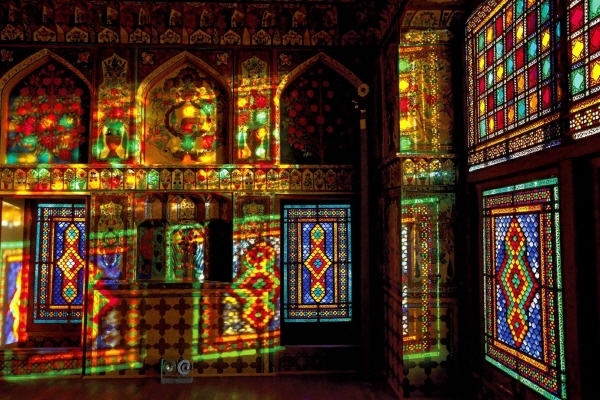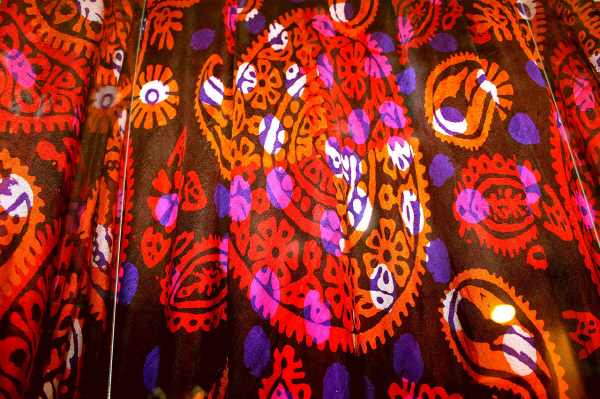Heritage
The Land of Poetry, Music, and Carpets
Azerbaijan, located at the crossroads of Eastern and Western cultures, boasts a rich history and unique culture influenced by various empires and ethnic groups. Recognized for its cultural significance, Azerbaijan has five UNESCO World Heritage Sites and 22 intangible cultural heritage elements.
UNESCO Tangible Cultural Heritage

The Walled City of Baku with the Shirvanshah's Palace and Maiden Tower
Baku has been inhabited since the Paleolithic era. The Walled City, also known as "Icherisheher," reflects layers of historical influences from Zoroastrianism, the Sassanid Empire, Arabs, Persians, Shirvanshahs, Ottomans, and Russians. This rare historical city is a UNESCO World Heritage site.
The Shirvanshah's Palace, a medieval Islamic building from the 15th century, and the Maiden Tower, whose purpose is still debated, were built on ancient foundations from the 6th-7th centuries BC, with major construction in the 12th century. The city's walls, mostly from the 12th century, are well preserved.
(designated in 2000)

Gobustan Rock Art Cultural Landscape
Gobustan is home to about 6,000 petroglyphs dating back 40,000 years, illustrating human hunting and lifestyle from the end of the Ice Age through the Middle Ages. (designated in 2007)

The Historic Centre of Sheki with the Khan's Palace
Sheki, located in northern Azerbaijan, is an ancient city significant on the Silk Road, inhabited since the 6th century BC. The city's traditional urban form dates back to a reconstruction after a major 18th-century flood. The Khan's Palace, built in the 18th century, is renowned for its stained glass and intricate frescoes.
(designated in 2019)
UNESCO Intangible Cultural Heritage
As Azerbaijan’s second-largest city, Ganja, founded in the 5th century, has historically been a key Silk Road city and a center of Islamic learning and culture in the medieval period. Its rich history is reflected in numerous museums and art galleries, showcasing Persian heritage and Soviet-era influences.

Carpet Weaving
While several Central Asian countries are known for carpet weaving, its origin is attributed to Azerbaijan, with records dating back to 2000-3000 BC. Carpets are deeply ingrained in Azerbaijani culture, symbolized by the proverb "Where my carpet is, there is my home." They vary by region in materials, techniques, patterns, and uses, and are integral to numerous cultural events and everyday life.
(designated in 2010)

Novruz
Celebrated on March 21, Novruz marks the beginning of spring and the new year in several Central Asian countries. The celebrations span 2-4 weeks, with various rituals and events. People gather around tables adorned with symbols of wealth, health, and life, sharing special meals, greeting elders, and giving gifts to children. Registered by 12 countries as a UNESCO Intangible Cultural Heritage, "Novruz" is the Azerbaijani name for this festival. In Azerbaijan, celebrations start four weeks prior, with each Tuesday highlighting one of the four elements: wind, fire, earth, and water, with related ceremonies. (designated in 2016)

Dolma: Traditional Azerbaijani Dish
Dolma involves stuffing grape leaves, cabbage leaves, zucchini, peppers, and other vegetables with meat and rice. Preparing dolma is a warm, communal tradition in Azerbaijan, reminiscent of Korean kimchi-making. This practice serves as a vital occasion for families to cook together, share stories, and pass down culinary skills. (designated in 2017)

Traditional Craftsmanship and Symbolism of Kelaghayi, Silk Headscarves
Found along the Great Silk Road, the art of Kelaghayi, silk headscarves, has flourished in the Azerbaijani towns of Sheki and Basgal. The scarves undergo several stages, including weaving silk fibers, natural dyeing, and decorating with wooden stamps. Each color and pattern holds unique meanings, and every family producing Kelaghayi has distinctive styles and characteristics. (designated in 2014)
Mugham Music (designated in 2003)
Known as "Azerbaijan's jazz," Mugham is a traditional music genre characterized by strong improvisation. Originating from religious funeral music, it now encompasses lyrics about common people's lives. The singing style resembles Korean traditional singing, with the singer playing a tambourine-like instrument and musicians accompanying with string and percussion instruments. (designated in 2003)
Photo By whc.unesco.org / Azerbaijan.az / bakutravelpackages.com / unesco.preslib.az
